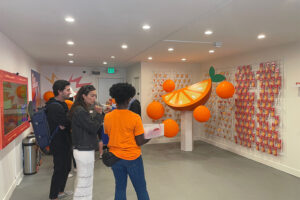Ideas For Physical Branding
Looking to make a lasting impression with your brand? Consider incorporating physical branding elements into your pop-up event. By utilizing tangible and visually appealing elements, you can create a memorable experience for attendees and reinforce your brand identity. Here are three ideas to inspire your next pop-up event:
1. Interactive Brand Installations
Create interactive installations that allow attendees to physically engage with your brand. For example, you could set up a photo booth with props and branded backdrops, encouraging guests to take pictures and share them on social media. Another idea is to create a branded mural or graffiti wall where attendees can leave their mark, further promoting your brand and creating a sense of community.
2. Branded Merchandise Stations
Set up merchandise stations where attendees can customize and purchase branded products. This could include items such as t-shirts, tote bags, or phone cases. By offering customization options, you not only provide a unique experience for attendees but also create walking advertisements for your brand as they proudly wear or use the merchandise in their daily lives.
3. Immersive Brand Experiences
Create immersive brand experiences that allow attendees to fully immerse themselves in your brand’s world. This could involve transforming your pop-up venue into a themed environment that reflects your brand’s values and aesthetics. For example, if you’re a sustainable fashion brand, you could create a pop-up garden filled with eco-friendly fashion displays and interactive workshops on sustainable fashion practices.







